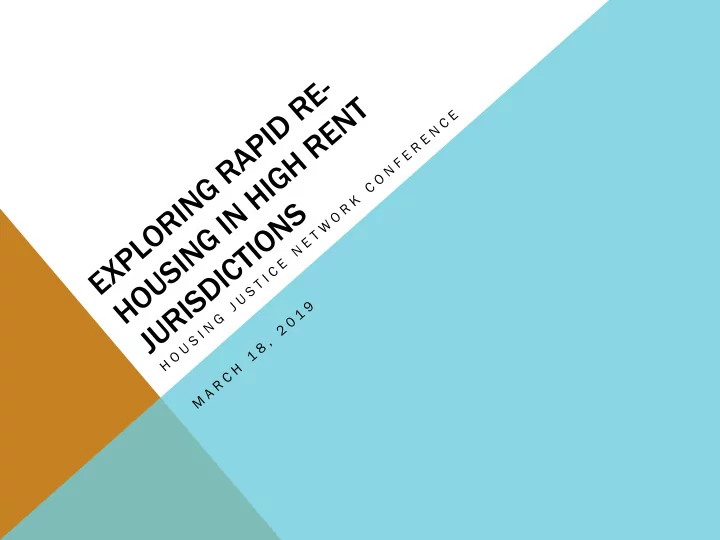

TODAY’S ROUNDTABLE ACTIVITY Break into small groups Identify challenges Discuss best practices and effective approaches Share policy alternatives
PROBLEM SOLVING TO END HOMELESSNESS Client strengths & priorities Program resources, knowledge & skills Community resources Focus on ending homelessness
PROBLEM SOLVING TO END HOMELESSNESS Individualized Assistance Start with the least amount of services and assistance necessary Frequently re-assess housing barriers and provide targeted support Always look for options that are sustainable beyond the RRH program
COC’S POLICIES AND STANDARDS FOR ADMINISTERING RRH ASSISTANCE Princ ncipl iples Rent and move ‐ in assistance will be fl flexible ble and tailor ored d to the varying and changing needs of a household while providing the assistance necessary for households to move immediately out of homelessness and to stabilize in permanent housing. All RRH programs will make efforts to maximize the number of households they are able to serve by providing households with the financial assistance in a progressive manner, providing only y the assistance stance necessar ssary to stabilize in permanent housing. RRH programs will provide “the least amount of assistance for the least amount of time,” while ensuring that enough is provided to be reasonably sure that the housing will “stick” and the assisted household does not return to homelessness.
PROBLEM SOLVING TO END HOMELESSNESS What makes the difference? Support networks and/or a safety net Life skills that allow individuals and families to operate independently Income (employment, education, public benefits, or a combination) Client choice and client-driven solutions
RRH Rule-based & Flexible & ASSISTANCE standardized individualized approach approach
WHAT DOES FLEXIBLE & INDIVIDUALIZED LOOK LIKE? Housing options Length and amount of rental assistance Type, duration, and depth of services Level of case management engagement What at els lse? e?
PLANNING FOR FLEXIBILITY Goals Challenges Identify service connections to Creating a budget before you meet client’s needs know what clients will need Adjust length & amount of RA Creating a staffing plan before based on the client’s need you know what clients will need Tailor case management to the Tracking spend-down as client client’s needs needs fluctuate Housing stability for high Running out of money percentage of clients served Engage and retain landlords Under-spending
HOUSING STRATEGIES Systematize Housing-Focused CM Unit location & Housing outside the box retention Reducing expenses Supporting savings Safety net/support Life skills & knowledge system Client Choice
WHAT IS SHARED HOUSING? Two or more people living in a permanent rental unit, sharing housing costs • Multi-bedroom apartment • Single family house • Two or more RRH clients • RRH clients and housed family or friends • RRH clients and roommates
SHARED HOUSING Advantages Challenges Increased housing options Interpersonal issues Reduction of rent burden Landlord challenges Help with childcare Filling vacancies Increased social connections Support with shared goals Assistance with disability
FUNDING CONSIDERATIONS Who has to be on the lease? Are there other lease requirements? Who needs to be eligible for the program? Who doesn’t? How do rent limitations apply? How do you calculate the client’s portion of rent?
Je Jessie@ sie@home omebas asecc eccc.org c.org
Recommend
More recommend